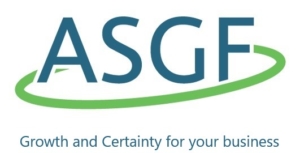Quick Guide to The Coronavirus Job Retention Scheme
as of 26th March 2020
1 Who can claim?
Any UK organisation with employees can apply, including:
- businesses
- charities
- recruitment agencies (including their agency workers paid through PAYE)
- public authorities
You must have created and started a PAYE payroll scheme on or before 28 February 2020 and have a UK bank account.
2 Employees you can claim for
Furloughed employees must have been on your PAYE payroll on 28 February 2020, and can be on any type of contract, including:
- full-time employees
- part-time employees
- employees on agency contracts
- employees on flexible or zero-hour contracts
The scheme also covers employees who were made redundant since 28 February 2020, if they are rehired by their employer.
To be eligible for the subsidy, when on furlough, an employee can not undertake work for or on behalf of the organisation. This includes providing services or generating revenue.
While on furlough, the employee’s wage will be subject to usual income tax and other deductions.
This scheme is only for employees on agency contracts who are not working.
All normal employment law still applies, ie no discrimination, seeking agreement if this is a change to contract,
3 What you’ll need to make a claim
Employers should discuss with their staff and make any changes to the employment contract by agreement. Employers may need to seek legal advice on the process. If sufficient numbers of staff are involved, it may be necessary to engage collective consultation processes to procure agreement to changes to terms of employment.
To claim, you will need:
- your ePAYE reference number
- the number of employees being furloughed
- the claim period (start and end date)
- amount claimed (per the minimum length of furloughing of 3 weeks)
- your bank account number and sort code
- your contact name
- your phone number
You will need to calculate the amount you are claiming. HMRC will retain the right to retrospectively audit all aspects of your claim.
4 Exceptions:
Employees hired after 28 February 2020 cannot be furloughed or claimed for in accordance with this scheme.
5 What you can claim
You can claim a grant from HMRC to cover wages for a furloughed employee, equal to the lower of 80% of an employee’s regular salary or £2,500 per month, plus the associated Employer National Insurance contributions and minimum automatic enrolment employer pension contributions on paying those wages.
6 Do I need to make the pay up from 80% to 100%?
No, you are not obliged to, providing any changes you make comply with employment law, ie are agreed to by the employee.
This from HMRC: You can choose to provide top-up salary in addition to the grant. Employer National Insurance Contributions and automatic enrolment contribution on any additional top-up salary will not be funded through this scheme.
7 Income tax and Employee National Insurance
Wages of furloughed employees will be subject to Income Tax and National Insurance as usual. Employees will also pay automatic enrolment contributions on qualifying earnings, unless they have chosen to opt-out or to cease saving into a workplace pension scheme.
Employers will be liable to pay Employer National Insurance contributions on wages paid, as well as automatic enrolment contributions on qualifying earnings unless an employee has opted out or has ceased saving into a workplace pension scheme.
8 Tax Treatment of the Coronavirus Job Retention Grant
Payments received by a business under the scheme are made to offset these deductible revenue costs. They must therefore be included as income in the business’s calculation of its taxable profits for Income Tax and Corporation Tax purposes, in accordance with normal principles.
Businesses can deduct employment costs as normal when calculating taxable profits for Income Tax and Corporation Tax purposes.
Disclaimer: This is for guidance only. You should seek professional advice before changing your employees’ terms and conditions of employment.
Full details can be found at: https://www.gov.uk/guidance/claim-for-wage-costs-through-the-coronavirus-job-retention-scheme

Leave a Reply
Want to join the discussion?Feel free to contribute!